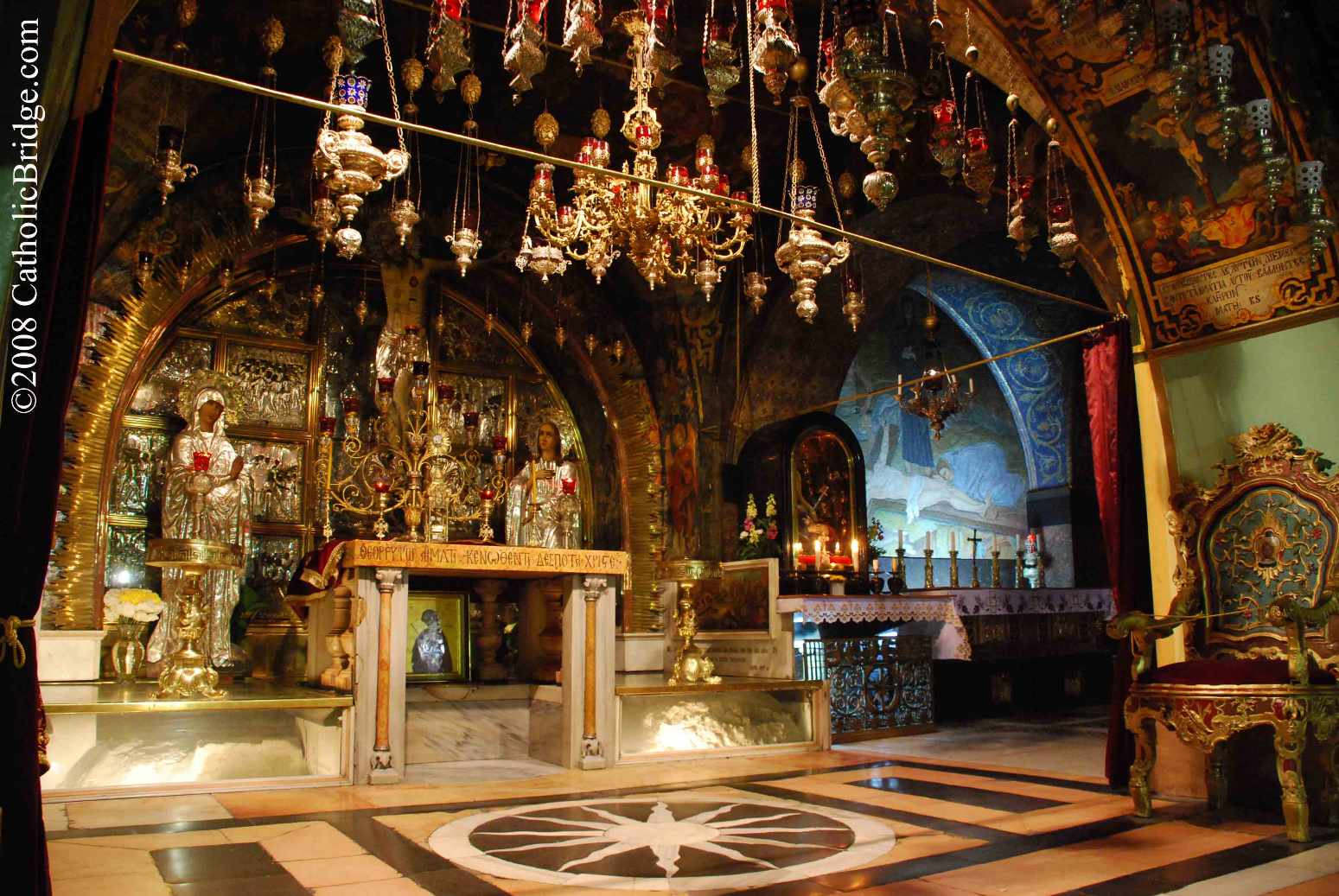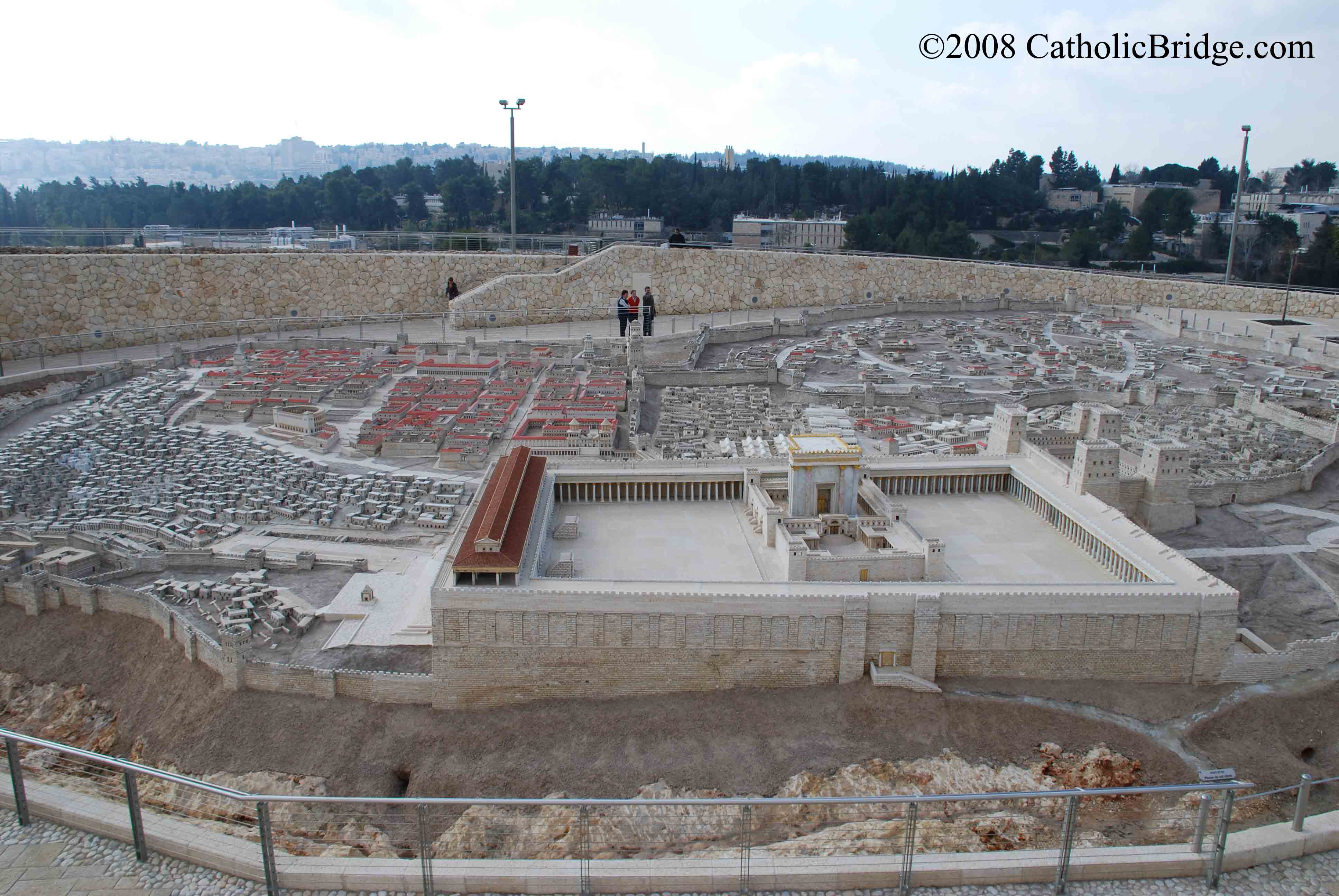Where is Golgotha? Where did Jesus die? Church of Holy Sepulchre vs. the Garden Tomb
In Israel, there are Churches on the sites of all the important events in Jesus life. We've been to most of them. Their locations date back to the third century when Christianity was legalized and churches could be built without getting knocked down by the authorities. Jesus crucifixion, death and burial was marked by the Church of the Holy Sepulchre in Jerusalem (photos here).

Photo: Location where tradition says Jesus was crucified
Queen Helena sought out all the biblical places
In 326, when Queen Helena came to the city with the historian Eusebius to find the place of Christ's death and resurrection and to mark it with a basilica, Christians of Jerusalem brought them to the site that is now the Church of the Holy Sepulchre.
Jewish Christians had been banned from Jerusalem in 135 AD by Hadrian, the emperor of the time, but non-Jewish Christians remained providing an unbroken line to the time of Christ. The Christians of Jerusalem chose the spot for the Church with no argument, but rather absolute consensus and they rejoiced over the fact that they could finally have a Church where Jesus died, where he was buried and was resurrected. Christians through the ages continued to revere the site.
The city fell to the Muslims in 1076. The Church was damaged but the site was preserved miraculously until the Crusaders arrived in 1099 and rebuilt it. Since then the Catholic, Greek Orthodox, and Armenian churches have shared the care for it. Even after Jerusalem fell again in 1187, part of the peace treaty with the Muslims was that the site be preserved for Christian pilgrims, which it was.
Later, Coptic Christians joined in the care for the Church. Never was there any doubt in Christendom. In 1517, the Reformation split up the Church, but the site of our Lord's death and resurrection remained. It wasn't until 1870, which was 250 after the Reformation, that a Protestant suggested another site for Christ's death.
The first proposal of the "Garden Tomb"
Scottish doctor R.F. Hutchison insisted that Christ could not have died where the Church of the Holy Sepulchre now stood; because it was within the walls of the city and thus ran counter to a New Testament passage indicating that the crucifixion took place outside the city.
He proposed a site, which was on the slope of the Mount of Olives. It began to get traction in Protestantism, but was rejected in 1884, by another Protestant, English war hero General Charles G. Gordon. Gordon proposed a skull-like outcrop and a nearby tomb now known as the Garden Tomb just outside the Damascus Gate. There was quick acceptance of this Protestant alternative to the Church of the Holy Sepulchre. Now Protestants had their own place where Jesus died. They named it the "Garden Tomb" after it was proposed as the location of the crucifiction.
What's the problem with these new proposals for the location of Christ's death?
In recent decades, excavations have revealed to Jewish scholars, historians, and archaeologists, who have absolutely no investment in the site of the Church of the Holy Sepulchre, that the walls in Jerusalem were in an entirely different spot during Jesus' time.
The current wall that surrounds the Old City was built in the 16th century by the Turkish Sultan Suleiman the Magnificent. The traditional site of Christ's death was outside the city walls at the time of Christ.
The spot marked by the Church of the Holy Sepulchre was outside the walls at the time of Christ.
When we were in Jerusalem we saw a huge model of the city of antiquity, built by Jewish authorities. It shows how the city changed over the centuries (photo below). This Israeli model shows the first wall of Jerusalem, the 2nd rebuilt wall, and the current 1600th century wall which was built further out to make room for the growing city.

Photo we took of the model of old Jerusalem showing old and rebuilt walls.
Gordon's main reason for denying the Church of the Holy Sepulchre as Golgotha melted away. The other problem with Gordon's idea that the "Garden Tomb" is where Jesus died, is that the tomb was carved out of the rock 700 years before the time of Jesus. The Bible says it was Joseph of Arimathea’s “own new tomb, which he had cut in the rock” (Mat 27:60) where "no one had ever yet been laid” (Lk 23:53). The reason many Protestants think Jesus died at the "Garden Tomb" is because 140 years ago, a nonacademic said the cliff looked like a skull, and because it was outside the new wall (built in the 16th century), which he thought was the old wall. Thankfully, Protestant scholars are slowly coming back to the traditional site for Golgotha. It's similar to the situation where many Evangelicals get baptised about 60 miles from the baptism site of the Bible, which had 2000 years of tradition. However, in that case the wrong site became popular because the authentic site was a war zone.
National Graphic publishes detailed drawings of the site's history in 2018
The non-Catholic, secular research organization,National Geographic did a set of drawings for each stage of the site's developement from the Resurection to the current Church of the Holy Sepulchre. They do not present alternative locations or waver at all on their certainty of the history of the site.
What's the evidence for the site at the Church of the Holy Sepulchre.
- In the early 1st century AD the site was a disused quarry outside the city walls. Tombs dated to the 1st centuries BC and AD had been cut into the vertical west wall left by the quarrymen.
- The topographical elements of the church's site are compatible with the Gospel descriptions, which say that Jesus was crucified on rock that looked like a skull outside the city (John 19:17) and there was a grave nearby (John 19:41-2). Windblown earth and seeds watered by winter rains would have created the green covering on the rock that John calls a "garden."
- The Christian community of Jerusalem held worship services at the site until 66 AD (at least according to historians Eusebius and Socrates Scholasticus, who wrote several centuries later).
- The Roman Emperor Hadrian built a Temple of Venus over the site in 135 AD, which could be an indication that the site was regarded as holy by Christians and Hadrian wished to claim the site for traditional Roman religion.
- The local tradition of the community would have been scrutinized carefully when Constantine set out to build his church in 326 AD, because the chosen site was inconvenient and expensive. Substantial buildings had to be torn down, most notably the temple built over the site by Hadrian. Just to the south was a spot that would have been otherwise perfect - the open space of Hadrian's forum.
- The eyewitness historian Eusebius claimed that in the course of the excavations, the original memorial was discovered.
- There has been an unbroken tradition of recognition of the site since the time of Jesus' death .
Based on the above factors, the Oxford Archaeological Guide to the Holy Land concludes:
"Is this the place where Christ died and was buried? Very probably, Yes."
The non Catholic Israeli scholar Dan Bahat, former City Archaeologist of Jerusalem, has said this of the Church of the Holy Sepulchre:
"We may not be absolutely certain that the site of the Holy Sepulchre Church is the site of Jesus' burial, but we have no other site that can lay a claim nearly as weighty, and we really have no reason to reject the authenticity of the site."
Other Bible Topics
The Role of Tradition
How come Catholics were not allowed to read the Bible
OK what's the deal on these "extra" books in the Bible
History of how the Bible came to us
